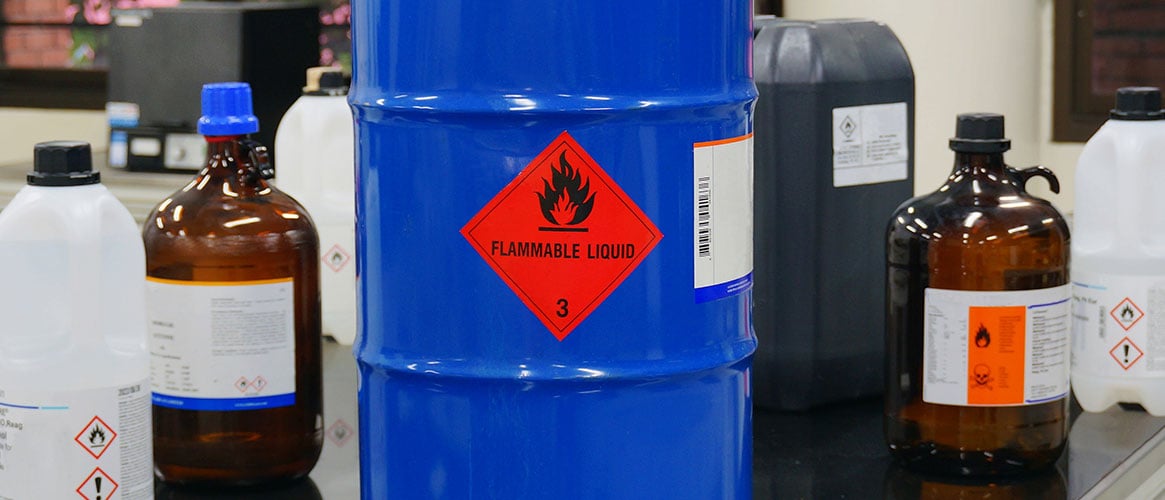Depending on the type of work you do, your employees may use common flammable liquids such as cleaning fluids, paints, and gasoline. It’s important to remember, if flammable liquids are not handled and stored properly, a fire or even an explosion can occur. Employees should be trained on how to stay safe when using these types of liquids to prevent serious injuries. They also need to know how to store the liquids and to understand the hazards that come with each one.
What your employees need to know about working with flammable liquids
The liquids themselves do not burn. However, as the liquid evaporates, it gives off vapors that mix with the air and form dangerous gases. These gases can ignite from a small sparks, open flames, electrical discharges from a light switch, or static electricity. Hot surfaces, like incandescent lightbulbs and welding torches can also cause ignition. These types of fires may burn much hotter than ones involving wood or paper. Flammable liquids should not be used near ignition points.
In fact, these liquids should only be used in areas with good ventilation. The vapors they put off are usually heavier than air so they collect in the lowest areas they can reach. In addition, not all dangerous liquids give off vapors that you can smell. Some vapors are poisonous as well as flammable. Ventilation, through natural or forced movement of air, can help dissipate the vapors. In workplaces without good ventilation, a small spark can set off a big disaster.
Flammable liquids have different flashpoints. These are the minimum temperatures at which they evaporate and become susceptible to ignition. Gasoline, for example, evaporates at temperatures as low as -45º Fahrenheit. As the temperature rises, the evaporation rate increases and produces more vapors. The lower the flashpoint of a flammable liquid, the greater the risk of fire or explosion.

